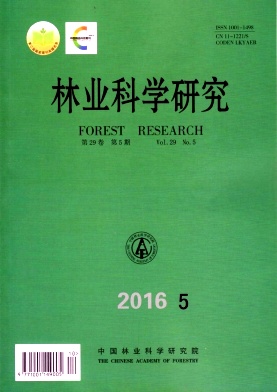|
[1]
|
孟昭军,周永泉,严善春,等.外源茉莉酸类化合物对2种落叶松针叶内单宁含量的影响[J].林业科学,2010,46(3):96-104.
|
|
[2]
|
Muir A D,Gruber M Y,Hinks C F,et al.Effect of condensed tannins in the diets of major crop insects[M]//Cross G G, Hemingway R W,Yoshida T. Plant polyphenols 2.Chemistry,biology, pharmacology, ecology. New York:Kluwer,1999:867-881. |
|
[3]
|
罗晓文,刘敏,齐晓花,等.果实涩味分子研究进展[J].分子植物育种,2013,11(5):647-656.
|
|
[4]
|
Rita M,Sheryl B.Improvement of flavor and viscosity in hot and cold break tomato juice and sauce by peel removal[J].J Food Sci,2015, 80(1):171-179. |
|
[5]
|
李雪蕾,丁兴萃,张闪闪,等.不同光强下麻竹笋不同部位苦涩味物质含量的变化[J].南京林业大学学报:自然科学版,2015,39(3):161-166.
|
|
[6]
|
Akagi T,Katayama-Ikegami A,Yonemori K. Proanthocyanidin biosynthesis of persimmon(Diospyros kaki Thunb) fruit[J].Scientia Horticulturae,2011, 130(21):373-380. |
|
[7]
|
Akagi T,Katayama-Ikegami A,Kobayashi S, et al.Seasonal abscisic acid signal and a basic leucine zipper transcription factor,DkbZIPS,regulate proanthocyanidin biosynthesis in persimmon fruit[J].Plant Physiology, 2012, 158(2):1089-1102. |
|
[8]
|
张亮亮,汪咏梅,徐曼,等.植物单宁化学结构分析方法研究进展[J].林产化学与工业,2012,32(3):107-116.
|
|
[9]
|
张立华,林益明,叶功富,等. 环境因素对植物单宁形成的影响[J].鲁东大学学报:自然科学版,2012,26(4):366-372.
|
|
[10]
|
顾小平.几种竹笋单宁含量的分析比较[J].林业科学研究,1989,2(1):98-99.
|
|
[11]
|
费建枫,谢佳妮,刘娟娟,等.Folin-Ciocalteu比色分光光度法测定鲜笋中的单宁[J].粮油食品科技,21(4):84-87.
|
|
[12]
|
赵晓虹,刘广平,马泽芳.竹子中单宁含量的测定及其对大熊猫采食量的影响[J].东北林业大学学报, 2001,29(2):67-71.
|
|
[13]
|
邱尔发, 洪伟, 郑郁善,等.麻竹山地笋用林笋期叶片光合及呼吸形状研究[J].林业科学, 2001,30(1):148-153.
|
|
[14]
|
GB/T 12312-2012. 感官分析味觉敏感度的测定方法[S].
|
|
[15]
|
崔明明.几种典型食品苦涩味控制方法的研究[D].广州:华南理工大学, 2013:1-72.
|
|
[16]
|
罗鹏,王越,李雅婷,等.碱性蛋白酶-风味蛋白酶协同对葵花籽蛋白水解度和苦味值的影响[J].农业机械, 2013(26),42-45.
|
|
[17]
|
崔凯,何彩云,张建国,等.毛竹茎秆组织速生的时空发育特征[J].林业科学研究,2012,25(4):425-431.
|
|
[18]
|
吴继林,郝秉中.巴西橡胶乳管分化的超微结构研究[J].植物学报,1990,32(5):350-354.
|
|
[19]
|
Angela W,Walid A D, Hanhua L,et al.The effect of aging and precursor concentration on room-temperature synthesis of nanocrystalline anatase TiO2[J].Materials Letters,2014,117:82-85. |
|
[20]
|
NY/T1600-2008.水果蔬菜及其制品中单宁含量的测定分光光度法[S].
|
|
[21]
|
张继澎,傍岛善次,石田雅士.不同品种柿树果实发育中期的单宁细胞观察[J].西北农业大学学报, 1993,21(1):41-45.
|
|
[22]
|
史敏晶,吴继林,郝秉中,等.巴西橡胶树树皮单宁细胞结构和发育[J].林业科学,2014,50(8):45-52.
|
|
[23]
|
张宝善,张有林.涩柿生长脱涩及返涩单宁细胞形态的变化[J].西北植物学报,2000,20(2):303-308.
|
|
[24]
|
杨勇,阮小凤,王仁梓,等.柿单宁细胞形态特征及发育动态研究[J].西北农林科技大学学报,2003,31(6):93-99.
|
|
[25]
|
夏宏义,杨勇,杨婷婷,等.柿果实单宁细胞特征与总酚和缩合单宁含量的关系[J].林业科学,2014,50(10):164-172.
|
|
[26]
|
Gao Z M,Li C L,Peng Z H. Generation and analysis of expressed sequence tags from a normalized cDNA library of young leaf from Ma bamboo (Dendrocalamus latiflorus Munro)[J].Plant Cell Rep,2011, 30(11):2045-2057. |
|
[27]
|
Lin C S,Liang C J,Hsaio H W,et al.In vitro flowering of green and albino Dendrocalamus latiflorus[J]. New For,2007,34(2):177-186. |
|
[28]
|
Shao H, Chu L,Lu Z H, et al.Primary antioxidant free radical scavenging and redox signaling pathways in higher plant cells[J].International Journal of Biological Sciences, 2009, 4(1):8-14. |
|
[29]
|
Shao H,Chu L,Jaleel C A,et al.Water-deficit stress-induced anatomical changes in higher plants[J].Comptes Rendus Biologies,2008,331(3):215-225. |
|
[30]
|
白瑞华,丁兴萃,杜旭华,等.套袋栽培对高节竹笋品质的影响[J].浙江林业科技,2011,31(1):64-67.
|
|
[31]
|
郭子武,江志标,陈双林,等.覆土栽培对高节竹笋品质的影响[J].广西植物,2015,35(4):515-519.
|





 DownLoad:
DownLoad: